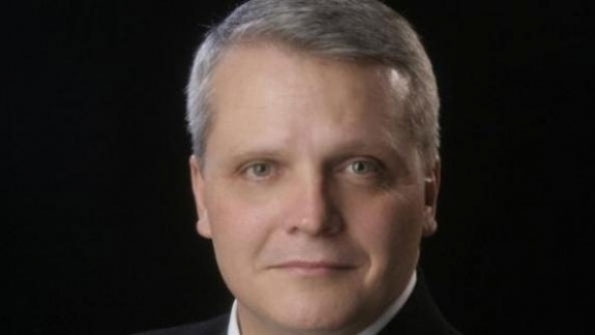FirstNet’s Johnson outlines legal issues surrounding PSAC
FirstNet officials want to share all network-related information they have with members of the Public Safety Advisory Committee (PSAC), but legal issues are preventing this from happening at the moment, according to FirstNet board member Jeff Johnson.
As part of a controversial presentation during the FirstNet board meeting in April, FirstNet board member Paul Fitzgerald said that the PSAC has been “treated more like a necessary evil than a valuable source of public-safety advice,” and that there has been more than one “roadblock … put down” to limit the ability of the PSAC to be involved in a “meaningful way.”
Johnson said that the legal limitations can be traced to the fact that the PSAC consists of members of SAFECOM, a group that operates within the U.S. Department of Homeland Security and consists largely of local-government representatives.
“The significance to that is, when you represent local government, by fact you don’t represent the federal government or FirstNet,” Johnson said during an interview with Urgent Communications. “So, that means that nondisclosure agreements that we may make with people that are trying to help us see the future and people who are trying to help us see the reality of manufacturing devices at a certain pace with a certain capability … only extend to FirstNet, the federal government and our agents, not to representatives of local governments.”
As a result, FirstNet board members cannot share information learned via nondisclosure agreements and other confidential sources with the PSAC members at the moment. This emerged as a source of frustration for all involved during a recent meeting between PSAC executive board members and the FirstNet engineering team that otherwise was very productive, Johnson said.
“There were elements that we couldn’t disclose to them, because of the elements that we have in front of us,” he said. “Fortunately, our legal team is trying to help us find a path through that, but some of this takes time, and it takes patience.”
FirstNet hopes to find a way to overcome this legal obstacle, Johnson said.
“This is the most important thing: We have been working for no less than 3 or 4 months trying to find a way where we can create access to them to see this information,” he said. “It’s in FirstNet’s best interest; it’s in the PSAC’s best interest; and, most importantly, it’s in the best interest of the public-safety community that they have visibility into this.”
When asked whether changes in the PSAC would have to be made if no legal solution to address the situation can be found, Johnson declined to comment on such speculation.
“I don’t want to go down this path of ‘What if we don’t?’” Johnson said. “I’m optimistic that we’re going to find a legal path to expose to at least some of the PSAP leadership the critical and important parts. But some of these things take time, and the legal process doesn’t move very quick sometimes. It’s challenging, but it’s important.”
In the meantime, FirstNet and the PSAC will work to communicate with each other as much as the law allows, Johnson said.
“We’re handling it by sharing everything we can legally share with the PSAC and seeking their counsel—that’s the best we can do today,” he said. “The PSAC wants it differently; FirstNet and our chairman want it differently, but we’ve got to work through the process.
“Here’s what isn’t tolerable for either of us. We cannot contaminate the outcome by breaching a process or something that is clearly evident in the statute. We just can’t go there—it’s not appropriate, and we don’t want to contaminate the outcome.”















More evidence that public
More evidence that public safety and its representatives in the Public Safety Alliance, and many of whom are now within PSAC and FirstNet, did not get everything they wanted in the legislation or the law, despite what some have claimed. The governance under NTIA and the lack of independence from the Federal bureaucracy are but just two of the shortfalls that we tried to avoid, T-Band giveback and only “up to $7B” are two more, and the lack of any foreseeable funding for R&D and NG911 before FY2017 are yet two more. Oh, and let’s not forget the constraints on who can be users of the network on a day-to-day basis ,which will be decided by courts someday. Those are big deals holding back progress and undercutting the potential for success, and many believe put in place by design to constrain and limit FirstNet and its level of robustness and success in realizing a nationwide public safety broadband network. There are those who do not want to see FirstNet succeed, and certainly not if it jeopardizes their controlling interests. It is far past time for individuals and groups claiming to represent consumer interests start listening to public safety and start speaking up for consumers’ rights to have reliable emergency communications capabilities, which clearly the commercial cellular and wireless networks do not provide today! That starts with securing such resources and capabilities for first responders.
Well it is easy to see why
Well it is easy to see why interoperability fails in this country. The monies would be better spent at the state and local level solving LMR “operability” problems. The Interoperability problem is dependent upon local coverage and operability and cooperation between agencies who desire to cooperate. The “one system fits all” plan is doomed.
After 30 years of military,
After 30 years of military, private sector, and government service in two-way radio communications, I agree with the comment that states could better spend the money and then accomodate the feds on each of their systems better than this Firstnet concept. How much money are we going to waste again before we realize we need more money to complete the job and it stalls out again? Get rid of the corporate egos and put the money where it can serve the people the best. It is like a broken record.
This article is clear and
This article is clear and succinct evidence that the motion presented by Sheriff Fitzgerald is well founded and appropriate, and also that his ideals and goals are definitely noble and correct. I applaud and support Sheriff Fitzgerald in his gallant exposure of the problems within FirstNet and his desire for support of Public Safety personnel.
Additionally, may I point to this article as evidence that a large lethargic, single-minded (not public safety oriented), unfocused organization such as FirstNet seems to demonstrate that a large corporation (a Gov’t Authority is just that) is not appropriate for Public Safety. Rather a small, highly focused and motivated group which develops requirements, specifications, standards and regulations is far more applicable to public safety needs. May I also point out that the creation of unique devices (hand held tablets, pda, etc) by the embedded inclusion of specific features, protocols, capabilities, etc under the guise of “interoperability” is only going to raise the cost of thee devices and make communicating with Public Safety a unique exclusionary function. The thought of needing “interoperability” in the “LTE, 3g, 4g” realm is preposterous and blatantly exclusionary. First these devices cannot communication directly between each, communication must be established via a network switch (processor, databases, etc), therefor “interoperability” is not an issue, it is handled by the ‘network & switch’. Secondly “interoperability” is not a hardware issue, it is clearly a command procedural issue and rises well above the minutia details of hardware issues. FirstNet’s claim that “interoperability” needs to be implemented in the devices is exclusionary, diversionary and contra-productive to the needs of Public Safety.
Again, thank you Sheriff Fitzgerald.